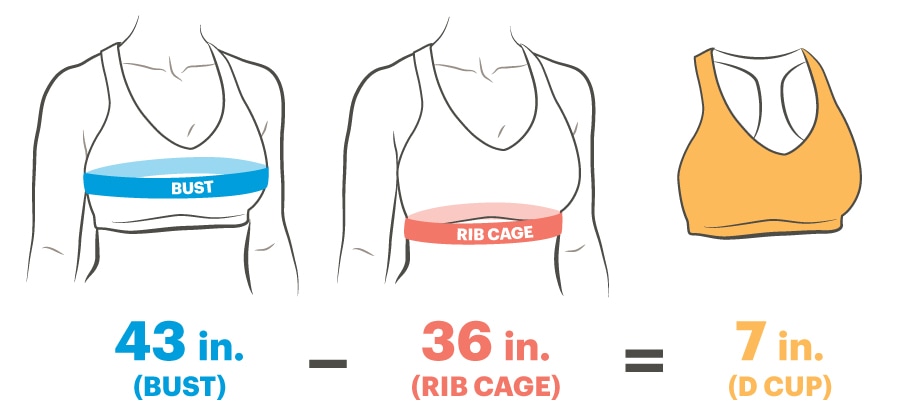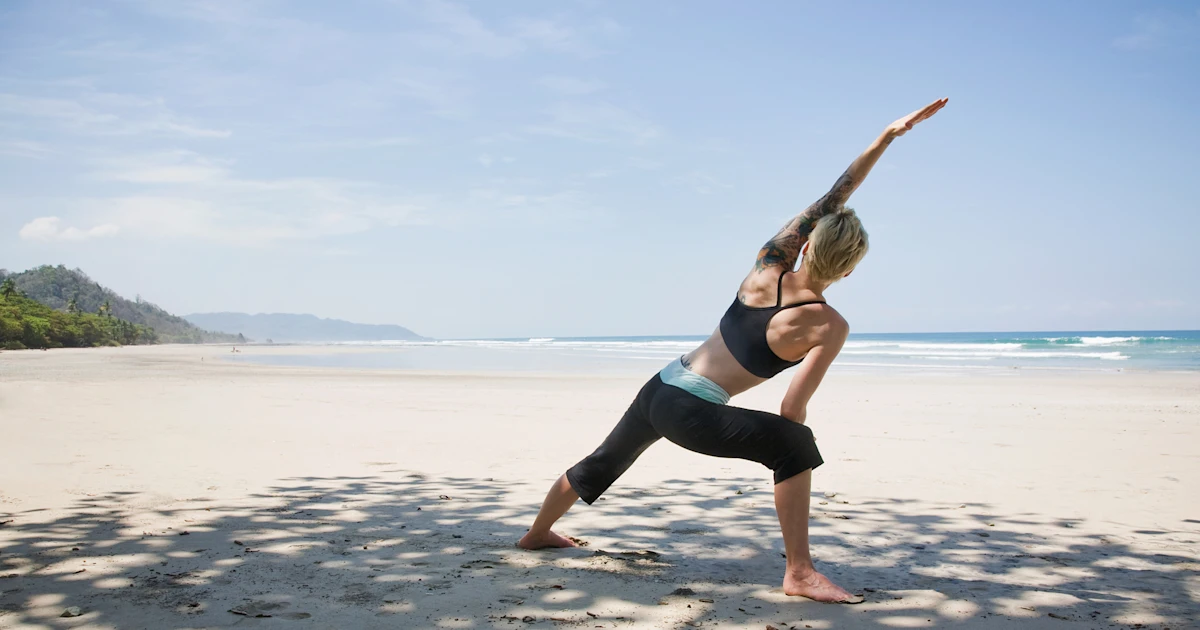You may need several sports bras for different activities — some bras have more support for high-impact activities like running and less constriction for lower-impact activities like
yoga or walking. Rotating between several sports bras will also help them last longer.
A sports bra may fit better than your everyday bra, but you may be the same size. Don’t size down when shopping for a sports bra. Every time you buy a new sports bra, calculate
your bra size. During your lifetime, your bra size will change several times. Physical changes such as weight loss or gain, pregnancy, hormones, and aging can all affect bra size.
If you haven’t measured yourself lately, we’ve provided a basic guide below. Think of it as a starting point.
You need a soft measuring tape to get started. Wear an unpadded bra that won’t change the shape of your breasts—or get measured without a bra.
1. Measure your ribs
Measure around the ribs just below the bust. Round down to the nearest inch. This is your ribcage measurement, which you will need to calculate your bra and cup sizes.
2. Figure out your band size
Measure your ribcage from step 1, then read the chart below to find your strap size.
3. Calculate your cup size.
It’s a two-step process:
First, measure around the fullest part of your breasts. Keep the tape running straight across your back. Round to the nearest whole number. This is your bust measurement.
Now, subtract your chest measurement (step 1) from your bust measurement (step 3). The difference in inches is your suggested cup size. If you are between sizes, please
round up.
Here’s an example:
[Bust measurement 43 inches] – [rib cage measurement 36 inches] = difference of 7 inches, so D cup.

Post time: Apr-07-2023
